3 Small Business Use Cases of AI Chatbots in Project Management
Artificial intelligence (AI) chatbots are on the rise. They are becoming intelligent enough to understand human language and become aware of : Maybe you have some customer service questions—or maybe you just need a taco.
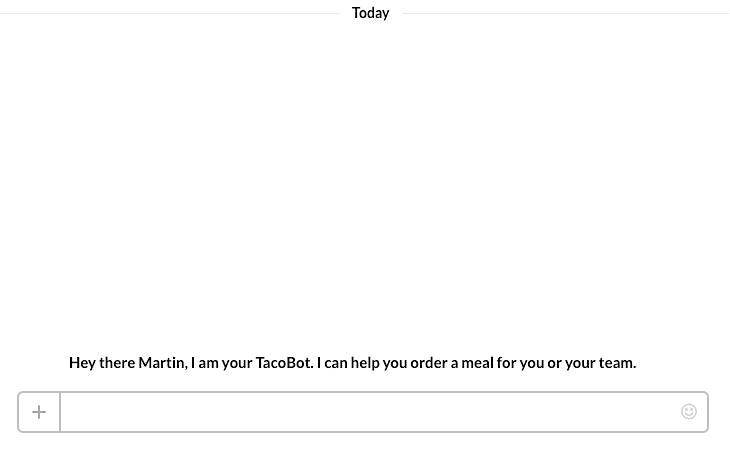 (Source: Taco Bell)
(Source: Taco Bell)
Chatbots allow you to execute tasks online in a few lines of conversational text. Think of them as virtual personal assistants.
But many SMBs are unsure of how chatbots work and the business benefits they offer. In a recent Gartner survey1, of more than 500 small and midsize businesses (SMBs), a surprising percentage found chatbots unnecessary.
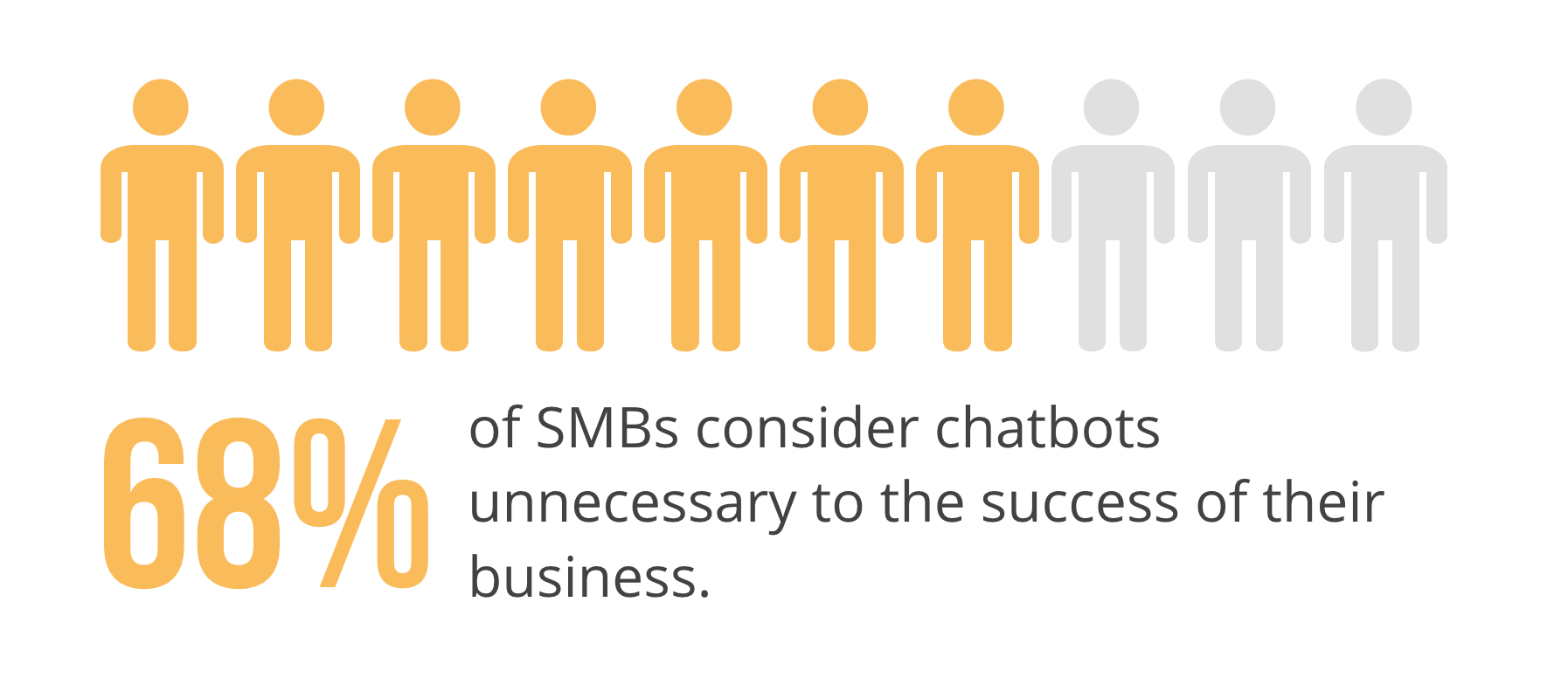
(Source: Gartner survey)
In the same Gartner survey, SMB leaders mention “increasing operating costs” as one of their top three business constraints.
Many of the SMBs in the survey have likely not considered how chatbots can reduce operating costs for their business.
In this report, we’ll explore how small businesses can drive efficiency in various project management processes and reduce operating costs using AI chatbots.
Here’s what we’ll cover:
Use Case #1: Project Collaboration
Use Case #3: Usability and Integration
Use Case #1: Project Collaboration
In our interactions with SMBs (who call us for software consultations), project collaboration is often cited as a concern area. Below is a recent example of a residential brokerage firm that highlights this concern:

“We want to be able to assign tasks to all the team managers in different departments and be able to have categories of each department so they can see who’s working on what. Being able to communicate to different groups, add notes and share video emails would be useful. Also, if someone is sick or gone we want to be able to assign that task to someone else so nothing falls between the cracks.”
As you can see, ease of collaboration between employees is a priority requirement for the brokerage firm—and that’s true of nearly every SMB in any industry.
How AI chatbots can help: A Chatbotslife.com article mentions that chatbots “add context to collaboration” and can “scrape out inefficiencies” in project management. In other words, chatbots can automate repetitive or cumbersome tasks, helping teams collaborate better in projects.
For instance, a chatbot like Meekan helps teams automatically match their schedules. Instead of emailing or updating calendars, team members can simply ask the chatbot to schedule a meeting. The bot then matches the team’s schedule to suggest/book a date and time, which suits everyone.
The chatbot goes even further. In the scenario described by the residential brokerage firm above, where someone can’t make it to a meeting, the chatbot works to find an alternative slot. This ensures that no one misses an important meeting, while reducing the back and forth of emails.
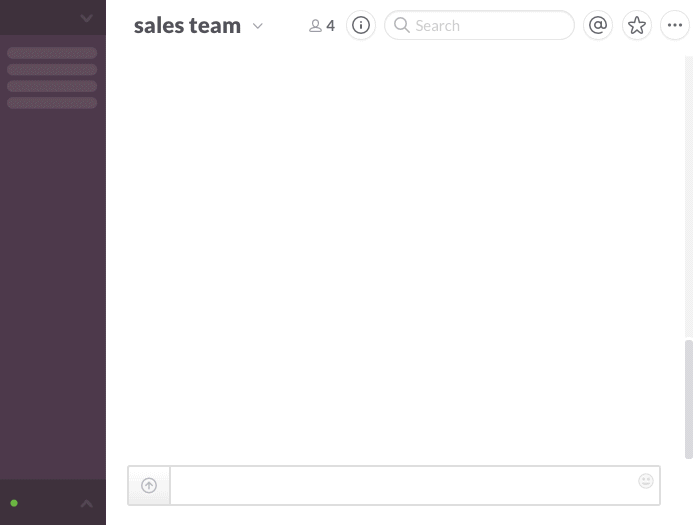
(Source: Meekan)
OUR RECOMMENDATION: There are many chatbots that help you collaborate more effectively in projects. However, collaboration varies from project to project and business to business. From setting-up a call, to initiating video conferences, to sharing to-do lists and much more, the needs can be plenty.
You should ensure that the project management tool you’re considering has the chatbot that meets your requirements.
Use Case #2: Task Management
Employees at SMBs are expected to handle different tasks according to the demands of a project. While juggling different tasks isn’t easy, things becomes especially difficult if everything is done manually. This was the challenge a US-based HR software vendor we interacted with faced:

“We need deadline and task tracking and need to allocate employees to tasks and projects, according to availability. Excel can’t manage any actual deliverables or tasks. Employees have to manually email out project schedule updates which is incredibly time consuming.
Chatbots are effective tools for automating tasks because, unlike Excel, these tools can trigger commands helping you easily create and assign tasks.
How AI chatbots can help: As intelligent programs, chatbots can quickly sift through large amounts of data, locate the right information and execute a set of tasks based on it. In Gartner’s “4 Uses for Chatbots in the Enterprise” report (content only available to Gartner clients), it’s noted that in an enterprise messaging system, chatbots can automate workflow approvals and sync calendars for team-members of a project.
Similarly, in a small business setting, bots such as Howdy and PMbot can automate different aspects of task management. Using the Howdy bot, an online marketing company could automate its content promotion process. Similarly, PMbot is a tool that can automatically create status reports, eliminating the need for companies to hold standup meetings.
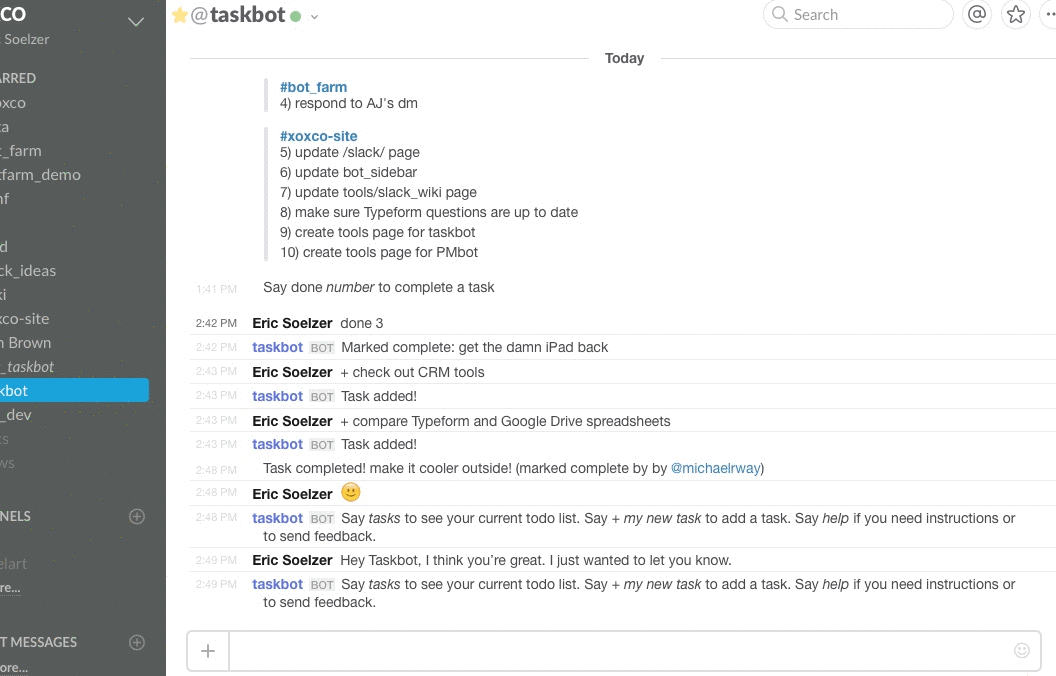
(Source: Xoxco)
OUR RECOMMENDATION: There are many task management software options that can help you plan and track projects. These tools save you tons of time spent managing tasks using Excel. However, if you’re currently considering a task management solution or are using a messaging tool like Slack, then chatbots can be a viable option.
Use Case #3: Usability & Integration
In a recent Software Advice survey, 53 percent of respondents reported that up to 10% of their projects are unsuccessful at meeting deadlines. While there can be many reasons for missing project deadlines, a financial service company we interacted with pointed out usability issues with their current system as the primary cause:

“The system is difficult to use so a lot of our employees never log in. This results in projects falling behind because employees aren’t staying up-to-date on deadlines.”
What this tells us is that project management can be even more difficult if you’re working with an unwieldy system. In this context, chatbots can be easy-to-use and inexpensive alternatives.
How AI chatbots can help: Project management solutions that offer integrations with other tools, via chatbots, help small businesses simplify project workflows and save money.
In his article “Why Robot? – Why Robotics and AI are Disrupting Business Process Management,” Peter Whibley, product manager at Totalmobile, analyzes the benefits of using bots over API based integration:
“Robotic software can work with most underlying applications with the interaction occurring through the user interface. While maybe not as graceful as an API based integration the benefits in terms of cost and speed of the watch, learn, do approach in many cases outweigh the negatives.”
An example is Workbot. This integrated chatbot automates a number of tasks for businesses. For instance, it allows team members using a project collaboration tool such as Slack or a task management solution such as Jira to automatically populate information in other business tools—which can mean creating leads in a CRM.
Employees can also access full details of customers or even manage tickets from within tools like Slack.
There are many more such chatbots that enhance the integration capabilities of project management tools. Instead of using clunky systems, with complex and expensive integration requirements, businesses can get many things done is a few lines of conversation with a chatbot.
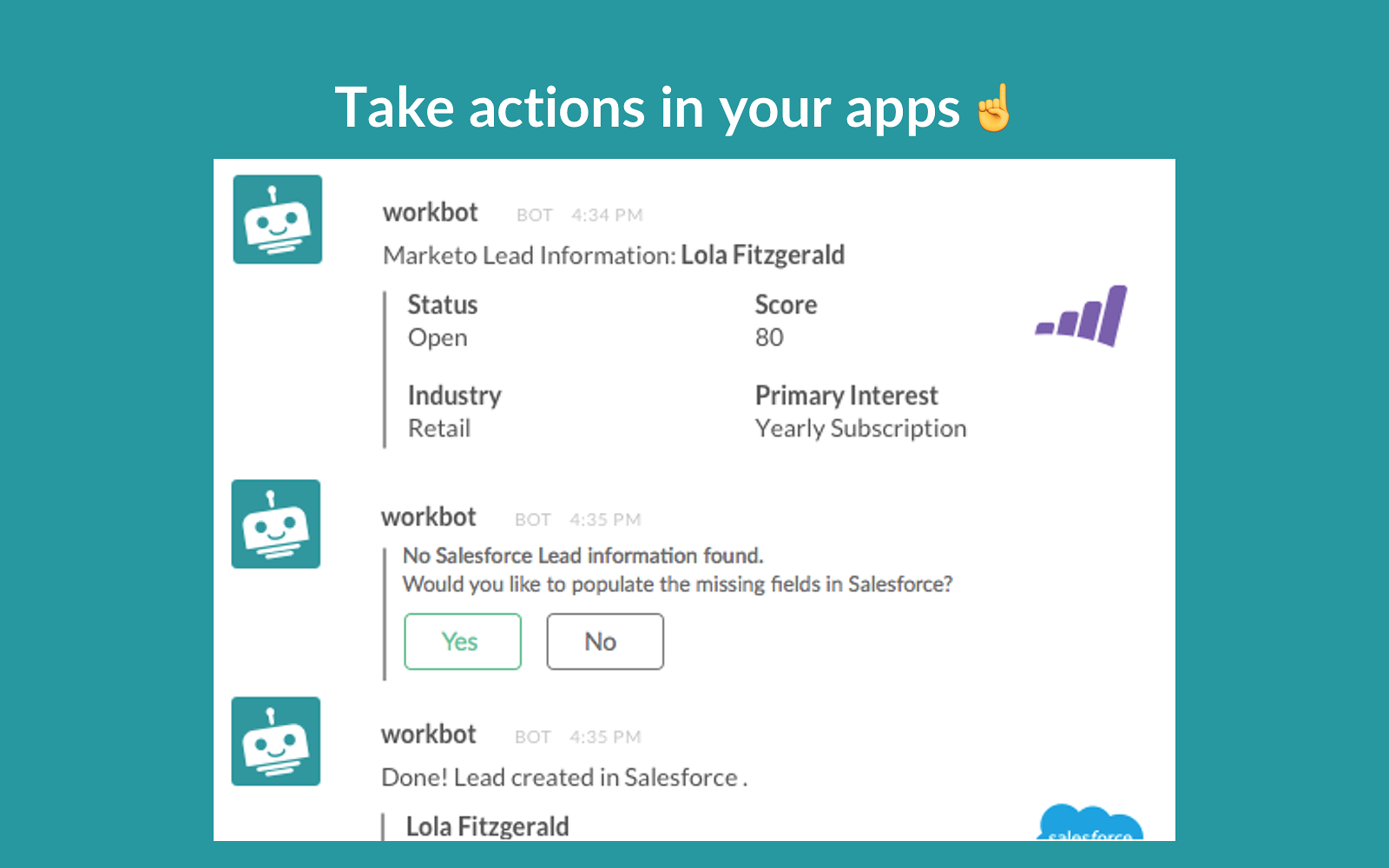
(Source: Workato)
OUR RECOMMENDATION: Tools like HipChat and Slack offer a large number of native chatbots, each with its own functionality and uses. However, ease-of-use and affordability are the two main reasons you should use chatbots. After all, you want tools to simplify cumbersome processes, not become cumbersome in the process.
Conclusion and Next Steps
There’s no argument that chatbots can drive efficiency in small business projects. Businesses can build AI chatbots with minimal expenses, without the need to hire experienced developers. The rise of chatbot platforms allows users, without high-level technical knowledge, to create bots using a drag-and-drop implementation.
However, the common reason why businesses have overlooked this technology is because it’s still in its infancy. Gartner’s “Hype Cycle for Project and Portfolio Management, 2017” (content only available to Gartner clients), mentions “project management bots” as a rising technology that will see rapid adoption by businesses in the next 5 to 10 years.
While it’s true that chatbots are yet to receive significant acceptance by businesses, early adopters of this technology will definitely see benefits like the ones we’ve mentioned above. There is also another, equally important reason, why small businesses should start using chatbots: embracing new technologies is the most effective way to engage with Generation Z—the next wave of workforce now ready to take over the reins.
Businesses should recognize this as a positive trend and empower them with the right tools.
To learn how to use chatbots in your business, call us at (844) 680-2046 for a free consultation with a software advisor.
1 Gartner conducted this survey in April-May 2017 among 699 US-based small and midsize businesses, with more than 10 employees and an annual revenue of less than $100 million USD. The survey excluded not-for-profit organizations. The qualified respondents are decision makers, or have significant influence on the decisions related to purchasing technologies for their organization.